Soviet Ulyanovsk and American Nimitz: nuclear, aircraft carriers, but why are they so different?
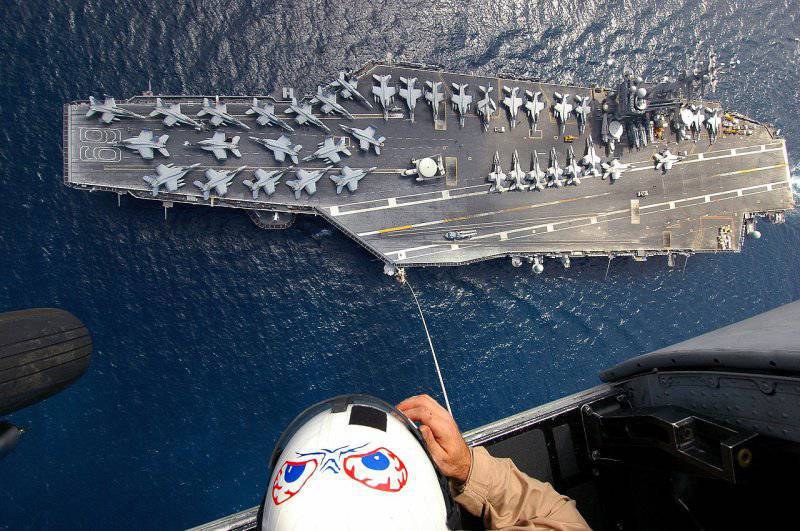
Air team project 1143.7
In the previous article, we already spoke about the fundamental difference in views on the role of the deck aviation in the USA and the USSR. In America, it was believed that this aircraft is the main force that can solve most of the problems of surface fleetand therefore they built their surface fleet there as a means of supporting the activities of carrier-based aviation. In contrast to this point of view, it was believed in the USSR that the main tasks of the fleet would be accomplished by multipurpose and missile submarines, as well as rocket and artillery surface ships, and that carrier-based aircraft should serve to ensure their combat stability. Accordingly, the Soviet ATACR was created not as multipurpose aircraft carriers, but rather as air defense ships, and this, of course, left a definite imprint on the planned composition of the Ulyanovsk air group. What was she supposed to be? The sources give very different data on this subject, some of which are shown in the table below:
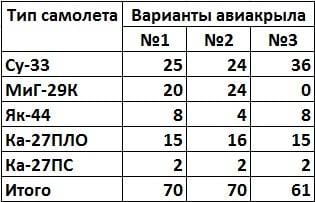
According to the author, the most realistic option was №3 with limiting the number of aircraft to 61 units. in case of rejection of light MiG-29K and bringing the number of Su-33 to 36 units. But, if the USSR had not collapsed, the MiG-29K would almost certainly have received their rightful place on the deck. Do not forget that the MiG-29K was designed based on the solutions of the MiG-29M, and the Su-33 - just on the basis of the usual, front-line Su-27. Thus, the MiG-29K avionics would be much more modern, and the fleet would hardly have refused such aircraft.
In addition, the Ulyanovsk air group can be easily recorded 12 PKR "Granit", in their fighting qualities, representing, rather, disposable unmanned aerial vehicles.
Let us compare the Ulyanovsk air group with the typical compositions of the wings of the US aircraft carriers.
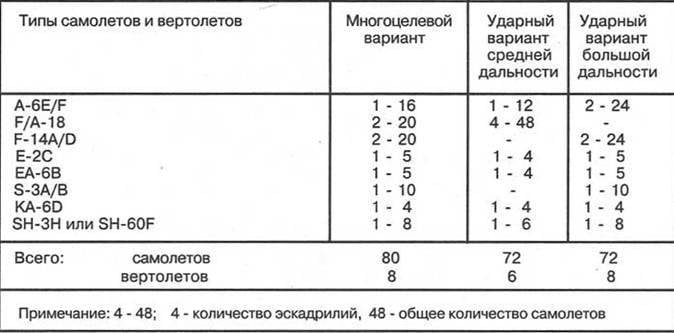
Fighters
The air defense of American aircraft carriers was built around an X-NUMX squadron of Tomcat F-2 / D, each consisting of 14-10 airplanes. I must say that Tomkat was originally created as an aircraft capable of ensuring full air supremacy in the immediate vicinity of the aircraft carrier, but ... The car came out quite controversial. The fighter turned out to be very heavy, and with insufficient thrust-weight, therefore, as an air fighter, he lost the same E-FNGX F-12, despite some of the possibilities that the variable geometry of the wing provided him. "Tomkat" was finalized for the use of long-range missiles "Phoenix", but the latter, by and large, were weapons interceptor, and were intended primarily for the destruction of the Soviet missile-carriers Tu-16 and Tu-22, as well as missiles launched from them. But to defeat enemy fighters "Phoenix" were not good enough. At the same time, the Su-33 was a heavy fighter winning air superiority and surpassed the "Tomcat" in combat performance.
In service with American naval pilots were also F / A-18 Hornet aircraft, which were also capable of conducting air combat. However, the key word here was “capable of” - creating the “Hornets”, the American Navy still wanted to get first of all a strike aircraft, which could also stand up for itself in air combat. This is evidenced by the very name of the “Hornet”, because F / A stands for fighter attack, that is, “fighter-attack aircraft”. Comparing it with an equally versatile MiG-29K shows that the MiG is significantly inferior to the American aircraft in shock capabilities, but has a certain superiority in air combat.
Thus, the deck fighters ATAKR "Ulyanovsk" individually superior to their similar American aircraft in their capabilities. At the same time, the superiority in numbers also remained for the domestic aircraft carrier - 36 Su-33 or the mixed air group from 45-48 Su-33 and MiG-29K apparently superior to 24 "Tomcat" or to 40 "Tomcket" and "Hornets".
Strike aircraft
Here the advantage of the American aircraft carrier is obvious. The US carrier-wing wings were compiled on a mandatory basis with specialized and highly effective A-6 Intruder attack aircraft, usually in 16-24 units, while the total number of attack aircraft could be as high as 40 units.
There was nothing like that on the Soviet ATAKR. At Ulyanovsk, only 20-24 MiG-29K could play the role of strike aircraft, but, as mentioned above, they lost not only to the Intruders, but also to the Hornet, according to their capabilities.
As for the Granit PKR, they, no doubt, were a very formidable anti-ship weapon. However, it was not universal (in theory it was possible to shoot over land, but the cost of the Granites was such that there would hardly be a goal justifying such means), and most importantly, the anti-ship missiles had too “short arm” in comparison with the American decked attack aircraft. Of course, the Ulyanovsk ATAK had certain shock capabilities, but they were essentially limited to a distance of about 550 km (Granites combined with MiG-29K with a more or less acceptable combat load), while American Intruders and The Hornets had the opportunity to act 1,5-2 a few times further.
I would like to note that today it has become very fashionable to scold domestic designers and admirals for their commitment to anti-ship missiles: according to a well-established opinion, it would be much better to abandon them, and use the released weight to enhance the capabilities of the air group. That is, to increase its strength, or to take an additional amount of jet fuel, aircraft, etc. This is very reasonable, but still it must be borne in mind that in at least one case, the presence of heavy RCCs perfectly complemented the capabilities of the Ulyanovsk ATAKR.
It is no secret that the leadership of the USSR Armed Forces very seriously perceived the threat posed by the US 6 fleet deployed in the Mediterranean. In order to counter this threat, the USSR Navy created the 5 th OPEC, that is, a large mix of surface and submarine ships, permanently present in the same region. "Interaction" with the 6 fleet was carried out regularly, and military service took place, including in the form of escorting US ships in an immediate readiness to strike at them in the event of a war and receive appropriate orders.
Given the limitations of the Mediterranean, long-range anti-ship missiles in it were an extremely formidable weapon. First, the Granites' range was quite enough to strike from the tracking position - after all, the carrier ship for such anti-ship missiles, which turned out to be in the center of the Mediterranean, could sweep it through from the European to the African coast. Secondly, which is very important at the beginning of the global conflict, the Granites had a short reaction time when compared with deck aircraft. And thirdly, the placement of the Granites at ATAKR made it possible to significantly increase its strike potential with "little blood" - in order to provide the same strike power, for example, using MiG-29K fighter jets, we would have to significantly increase our aircraft group.
Thus, for ATAKR, which were planned to be used for BS as part of the 5 OPESK, the deployment of Granit RCC should be considered to be to some extent justified. Especially since such anti-ship missiles could only be placed on ships of very large displacement, from a missile cruiser and above, which even the USSR could not build in sufficient quantities. However, in this case, there is a surprise that the decision to equip the RCC is incomplete. The fact is that according to the calculations of our naval specialists, a blow to the AUG should have been inflicted with at least 20 rockets, but there were only 12 on the Ulyanovsk ATAKR. I would like to note that when equipping the RCC ship, very significant weights and areas of the premises are spent on sailors and officers serving this type of weapon, on its control systems, etc., which are generally the same for both 12 and 20 CRP And if, for example, for ATAKR, intended for service in the Pacific Fleet, all this is clearly not necessary (it is extremely difficult to imagine how ATAKR would get close to American ships for the distance of use of "Granites"), then for ATAKR, which were to serve in the Northern Fleet and to carry out regular combat service in the Mediterranean, the ammunition charge might have been increased by the 20 RCC.
Provision aircraft
Unfortunately, the ATAKR project had only one type of such machines - we are talking about the DRLO Yak-44 aircraft in the number of 4-8 units. In this regard, Ulyanovsk lost to the US aircraft carrier, which had at its disposal 4-5 DRLO aircraft, the same EW and 4 aircraft tanker based on the A-6 Intruder.
Certainly, the appearance of an ARLO aircraft in the composition of the Soviet carrier-based aviation, capable, as far as can be understood from its descriptions, to conduct also radio-technical reconnaissance, was a giant step forward on the path of combat information support of the USSR Navy. However, the comparative weakness of our regular electronic warfare systems of the end of the last century, combined with the lack of specialized EW aircraft, remained the true “Achilles heel” of our naval aviation. Of course, the presence of "air tankers" also increased the operational capabilities of American aircraft carriers. For the sake of fairness, we note that the Ulyanovsk air group should have included 2 specialized rescue helicopters, but the Americans could perform PLO helicopters.
Anti-submarine defense
As you can see, the Americans paid great attention to the antisubmarine capabilities of their air wing: it included X-NUMX S-10A / B Viking and 3 SH-8H or SH-3F helicopters, and a total of 60 aircraft.
At UTAKR "Ulyanovsk" this is much worse, because there are simply no specialized PLO planes as part of its wing: at the same time, it should be understood that the PLO plane is more efficient and capable of working more distance from the aircraft carrier than the PLO helicopter. But even in terms of numbers, the Ulyanovsk air group was inferior to the American ship, the Ka-15PL helicopters 16-27.
Battle stocks
In this matter, the Ulyanovsk ATAKR also apparently lost to the American aircraft carrier. The author does not have accurate data on the military reserves of Ulyanovsk, but the literature mentions that in this parameter the ATAKR should have more than doubled the previous 1143.5 and 1143.6 projects. On the Kuznetsov TAKR, about 2 500 tons of jet fuel are placed, but there is no exact data on ammunition. Taking into account the information that they are twice as large as the mass of aviation munitions on the previous types of TAKR, we get the maximum 400 t. Accordingly, it would not be a mistake to assume that similar stocks of Ulyanovsk could be 5,5-6 thousand tons. And stocks of ammunition - up to 800- 900, maybe 1 000 tons. At the same time, the similar indicator of the American “Nimitz” is about 8,3-10 thousand tons of jet fuel and up to 2 570 t of air munitions.
Service staff
Here the advantage, again, for the American aircraft carrier. In addition to the crew of the Nimitz itself, on the US aircraft carrier there is also an air group in 2 500 people, while the Ulyanovsk ATAKR was supposed to have only 1 100 people. In other words, the American aircraft carrier was able to “offer” its aircraft better service than the Soviet ATAKR.
Takeoff and landing operations
It is extremely difficult to compare their capabilities on the American aircraft carrier of the Nimitz type and on the Ulyanovsk ATAKR. If only because it is not entirely clear what exactly the Soviet atomic heavy aircraft carrier should have been equipped with.
That is, of course, well-known data that the "Ulyanovsk" was supposed to get 2 steam catapults and a springboard, but how it happened was not quite clear. There is information that initially the project "Ulyanovsk" assumed the presence of three catapults, and it is unclear whether the ATAKR had to carry the springboard at the same time. It is also known that the number of catapults on this ship was the cause of fierce disputes, following which the composition of the "take-off means" was approved. In the end, they stopped on 2 steam catapults, but, according to some data, work in the USSR on electromagnetic catapults advanced so well that Ulyanovsk could get them.
In addition, it is completely unclear how the speeds of lifting aircraft correlate using a catapult or from a springboard: some data for calculations can be obtained only by viewing the video of flights of carrier-based aircraft. In detail, all this was dealt with by the author in a series of articles on the “Kuznetsov TAKR”. Comparison with NATO aircraft carriers ", so here we only summarize what was said earlier.
According to the author’s calculations, an Nimitz-type aircraft carrier is able to lift into the air a group of 45 aircraft in 30 minutes. Strictly speaking, the performance of American catapults is higher, they are capable of sending one plane to the flight for 2,2-2,5 minutes, taking into account the time of arrival to the catapult, etc. But the fact is that, as a rule, the location of a large air group on the deck prevents the 2 catapult from operating four, so that the American aircraft carrier does not start to work at full capacity immediately: all 4 catapults can be activated only after the start of a part of the aircraft. At the same time, "Ulyanovsk", judging by the location of its catapults and starting positions, is fully capable of immediately using two nasal positions for starting from a springboard and both catapults, and later a third ("long") position can join them. At the same time, the speed of lifting fighters from a springboard can easily reach 2 airplanes every three minutes only from two launch pads and 3 - from three, but aircraft carrier catapults will work somewhat slower than American ones, since they are located in such a way that they overlap the takeoff line. Nevertheless, it is entirely possible to assume that the Ulyanovsk ATAKR is capable of providing the rise of no less than 40-45 aircraft in half an hour, that is, its capabilities are quite close to the American nuclear aircraft carrier.
On the other hand, one should not forget that taking off from a catapult for a pilot is more complicated, and besides, fighters cannot take off from “short” launch positions in the maximum take-off mass. But, again, it should be understood that when the aircraft defends the connection, this maximum take-off weight will not be necessary: the fact is that the large reserves of fuel make the aircraft heavier, significantly reducing its maneuverability, and often simply are not required. If the Ulyanovsk ATAKR is to provide a flight for a maximum combat radius, then the lifting speed of the air group will not be so critical and it can be organized from two catapults and one “long” launch position.
Yet, without having all the fullness of the information, the author is inclined to believe that a purely ejection aircraft carrier will have an advantage over a purely springboard or a ship of a mixed scheme, in which both the springboard and the catapult are used. But in the latter case, the superiority of the ejection aircraft carrier may not be so great, and besides, in the case when saving displacement is required, the springboard seems to be almost the only alternative.
The fact is that the steam catapult is the most complicated complex of equipment, steam generators, communications, etc., the total weight of one catapult with all the units serving it reaches 2 000 t. It is clear that two additional catapults will immediately “eat” around 4 000 tons of payload, while the springboard - is a multiple of less, since its mass hardly exceeds several hundred tons.
As for the preparation of aircraft for flight, the “Nimitz”, again, has a preference. As you know, the area of the flight deck is one of the most important characteristics of an aircraft carrier, because the planes ready to take off, filled with suspended arms, are located exactly on it - it is theoretically possible to lower such cars into the hangars, but it is almost extremely dangerous. Accordingly, the larger the flight deck of an aircraft carrier, the larger the air group can be placed on it. So, at “Nimitz” this indicator reaches 18 200 sq.m., while at ATAKR “Ulyanovsk” it is about 15 000 sq.m.
And what is the result?
As a result, we have two completely different aircraft carrier, designed to solve different, in general, problems. As has been said above many times, the Americans placed a leading role on literally everything on their carrier-based aircraft. Accordingly, their standard wing (especially in the 20 "Tomkatov", 20 "Hornet" and 16 "Intruder" versions) was fully universal. It was attended by both airplanes intended primarily for air combat — the Tomcats, and specialized attack intruders, and the Hornets were a magnificent “cavalry reserve” that could enhance, depending on the current situation, fighters or attack aircraft aircraft carrier. At the same time, the actions of fighter and attack aviation were provided with the necessary means of reconnaissance, support and control — DRLO, EW aircraft and also “flying tankers”. In addition, the wing was able to build a powerful anti-submarine defense, echeloning aircraft and helicopters PLO.
Accordingly, the American aircraft carrier was almost an ideal "floating airfield", the main and only task of which was to ensure the functioning of the wing described above.
And, thanks to the versatility of their air group, aircraft carriers of the Nimitz type became truly multi-purpose, capable of effectively destroying surface, ground, air and underwater targets.
At the same time, the Ulyanovsk ATAKR was a much more specialized ship. As is known, specialization is always more effective than universalism, and besides, a number of the above-described shortcomings of Ulyanovsk in the light of the tasks before it are not at all. Consider this a little more.
The Ulyanovsk ATAKR turned out to be significantly less than the Nimitz - 65 800 T against 81 600 T, despite the fact that later the American aircraft carriers of this series “grew up” by about 10 000 T. Accordingly, the Soviet ship cost less, and that when making such Leviathans certainly mattered.
At the same time, in addressing its key task - providing air defense of diverse forces striking US AUG, the Ulyanovsk ATAKR had certain advantages over the Nimitz type aircraft carrier. His air group, “sharpened” for air combat, was able to oppose Tomcats with 24 or up to 40 units. "Tomkatov" and "Hornets" 36 Su-33 or 45-48 Su-33 and MiG-29K, respectively. At the same time, Ulyanovsk could deploy even more air patrols with the participation of DRLO aircraft than the American aircraft carrier, which, again, gave the Soviet ATAKR certain advantages. The only thing the Americans won was the availability of EW aircraft, but it would hardly be crucial.
The American aircraft carrier had some advantage in the possibilities of the rapid rise of the air group, but it was leveled by the tactics of using ATAKR. Of course, if we imagine some hypothetical duel between ATAKR and the US aircraft carrier, then the latter, due to the greater number of catapults, a larger deck area, the presence of specialized Intruder attack aircraft and the superiority of its attack aircraft in the range, will have an undeniable superiority over the Soviet ship.
But the whole question is that no one was going to oppose ATAKR to the atomic "Nimitz" in direct confrontation. The ATAKR was supposed to cover the surface and submarine ships located hundreds of kilometers from the AUG, but it itself was to be positioned much further away: thus, the “air battles” were supposed to “boil” somewhere halfway between the aircraft carrying ships. Thus, incomplete loading of aircraft starting from two “short” positions to a certain extent ceased to be a problem, and when using these positions, the rate of recovery of the Ulyanovsk air group approached Nimitsu. If it was about covering regiments of rocket-carrying aircraft striking at AUG, then its departure is known in advance, and the ATAKR had the opportunity, using two catapults and a third, “long” launch position, to form air cover forces capable of acting on a full radius.
In order to minimize the number of ships involved in the direct guard of ATAKR, the latter was equipped with the most powerful, and not afraid of the word, robotic protection system. In fact, it had to work like this: the electronic reconnaissance equipment automatically detected those or other radiation and automatically carried out countermeasures: jamming, traps, etc. In the event of a ship’s attack, the ATAKR fire weapons, “Daggers” and “Dirks” would have to reflect it automatically and under the control of a single BIUS. That is, very impressive fire capabilities and EW facilities should have acted automatically and, at the same time, “in unison” with each other. The American aircraft carrier defended much weaker. On the other hand, the reduced ATACR displacement did not allow to place on it the equally powerful PTZ that the Nimitz had.
ATAKR was very losing to Nimitsu in the amount of combat reserves - it carried less fuel in 1,5-1,7 times and 2,5-3 times less ammunition. But it should be understood that the American multi-purpose aircraft carrier was created including for a long-term impact on coastal targets. That is, one of the forms of combat use of American aircraft carriers, and, however, not the main one, was supposed to maneuver at a certain distance from the coastline of the enemy and the application of systematic attacks on targets in its territory. At the same time, the ATAKR did not have to do anything of the kind. Compared with such an operation, the destruction of the AUG is transient, and there either the enemy aircraft carrier will be sunk / incapacitated, or our striking squad will be defeated and beaten - in any case, it will no longer need air cover. In addition, ammunition for air combat, for obvious reasons, weighs much less than those used to destroy ships or ground targets.
Conclusions
They are very simple. The Americans, by virtue of the concept of their navy, required effective "floating airfields" —multi-purpose aircraft carriers. It was theirs that they got, bringing the standard displacement of the “Nimitsev” to more than 90 thousand tons, but at the same time sacrificing powerful ship's air defense. At the same time, the USSR was building a highly specialized ATAKR, intended primarily for the destruction of air targets. As a result, the ship was supposed to turn out, although inferior in some parameters to the Nimitsu, but which was fully capable of performing its key function, that is, crushing or tying its wing in battle, thereby ensuring the defeat of the AUG with missile-carrying surface or submarine ships, or land-based aircraft.
In other words, by deliberately weakening the shock capabilities and less significant - the PLO, the Ulyanovsk ATAKR, despite its smaller size, was able to solve airspace control issues, perhaps better than the single AUG, headed by an Nimitz-class aircraft carrier.
And today, when designing the first Russian aircraft carrier, we should, first of all, make a conceptual choice. If we are going to build a fleet in the image and likeness of an American, then we will need a multi-purpose aircraft carrier similar to the American one. At the same time, it is necessary to imagine exactly what to design the “same“ Nimitz ”, only with a displacement of 60 000 t” we will fail. That is, a multi-purpose aircraft carrier in such a displacement, of course, is possible, but it will be much weaker than any American in all, I stress, in all respects.
At the same time, such an aircraft carrier, of course, will require a significant escort: just like the American one: the difference is whether there is almost no support for the ship’s air defense / anti-aircraft system in the 100 000 tonnes or in the 60 000 tonnes. You can even say that the "sixties" aircraft carrier will require more escort than the "Nimitz" or "Gerald R. Ford" - the wing of the latter more and will provide the best level of protection of the connection.
It’s another thing if we adopt the Soviet concept and create not multi-purpose, but specialized aircraft carriers “sharpened”, for example, in air defense - here it’s really possible to do with ships of moderate displacement, which, nevertheless, will be able to fulfill their key function . But it should be understood that in the Soviet concept, the main strike role was played not by deck aircraft, but by the Tu-16 and Tu-22 missile carriers, surface missile and submarine cruisers, while the task of the TAKR and ATAKR was merely ensuring their actions. Thus, having gone along the Soviet way, we can really afford an aircraft carrier that is much smaller than the Nimitz and save on it. But only under the condition of the formation of sufficiently strong rocket-carrying "kulaks", which our aircraft carrier will cover, and which, in fact, will solve the tasks of fighting the forces of the enemy’s fleet.
In other words, before embarking on the construction of an aircraft carrier, it is necessary to decide, neither more nor less, with the concept of the domestic fleet, and this must be done, in essence, long before it was laid down. In an amicable way, it was necessary to know long before the start of the GPN 2011-2020, in order to determine the number and the performance characteristics of the ships planned for construction in the framework of a single concept of naval construction.
It must be said that our fleet’s defeat in the Russo-Japanese war was extremely difficult, but many subsequent actions to revive the fleet (by no means all, alas) deserve the highest praise. The naval general staff seriously thought about what kind of naval forces they would need and why. The composition of the squadrons of which the fleet was to be composed was determined, as well as the tasks assigned to each class of ships. And then, the Russian Empire began to build no longer individual ships, or even their series, but the creation of squadrons, that is, the main structural units of which the fleet was to be composed. Yes, of course, there were still a lot of mistakes in determining the performance characteristics of ships, but the fact is that in Tsarist Russia they finally understood: in order to have a military fleet, it is necessary to build a military fleet, that is, to conduct naval construction within a single concept of its application, and not separate, even though arbitrarily powerful ships. Alas, the only lesson stories is that people do not remember her lessons ...
To be continued ...
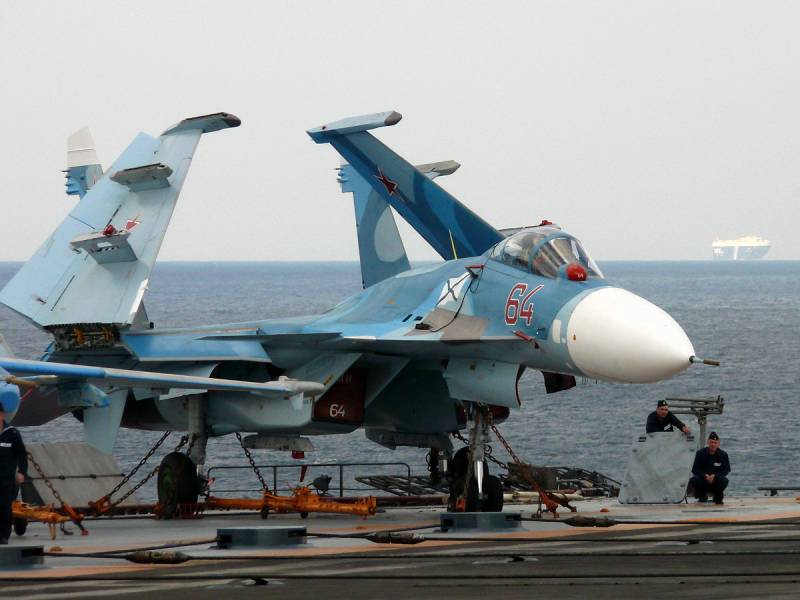
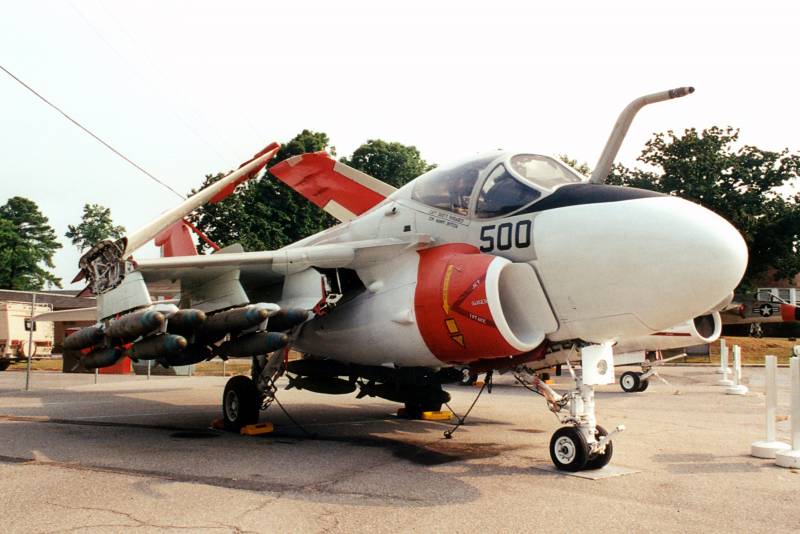
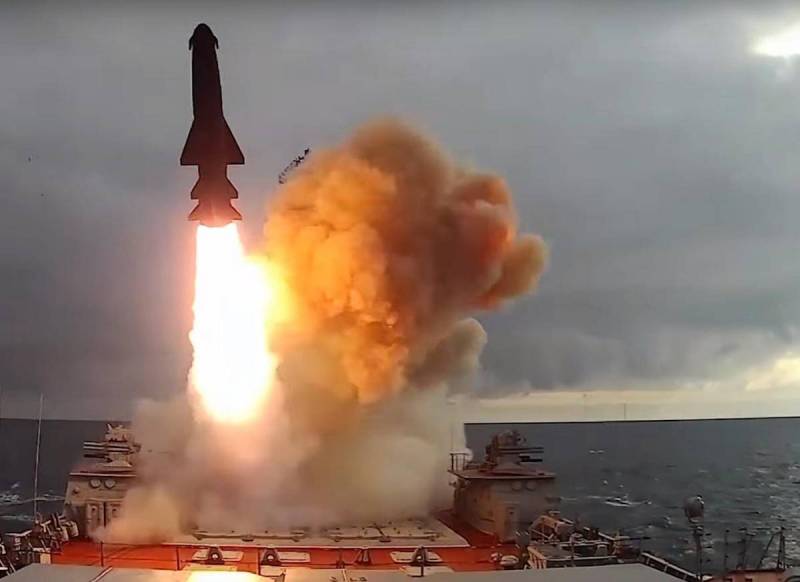
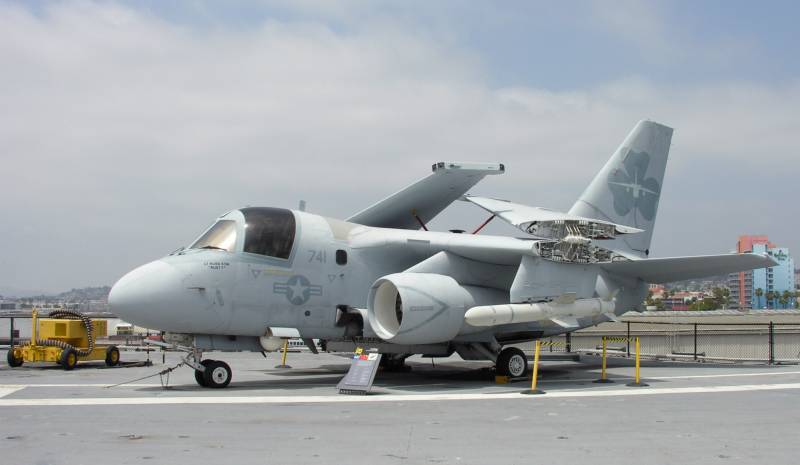
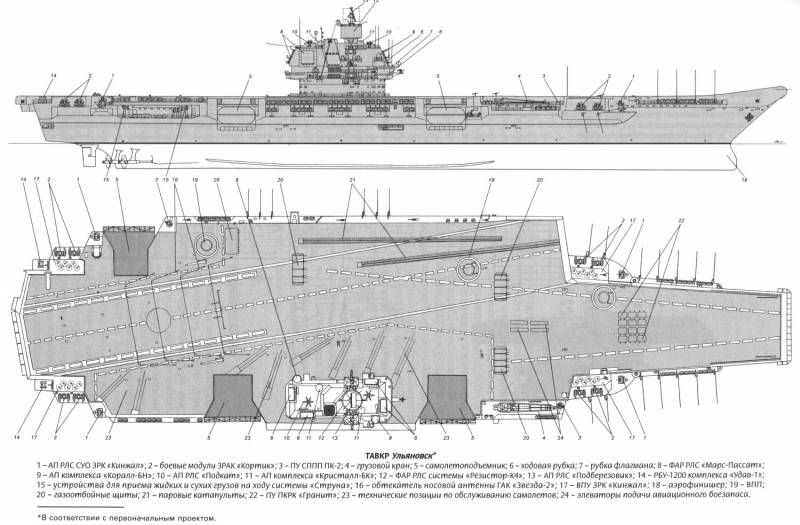
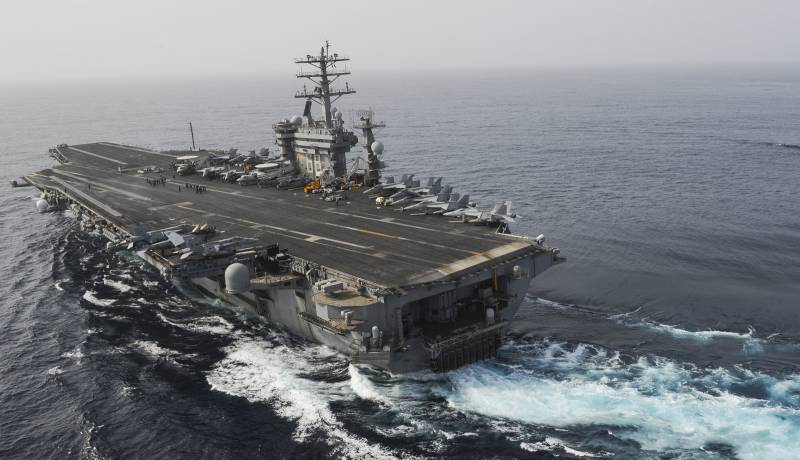
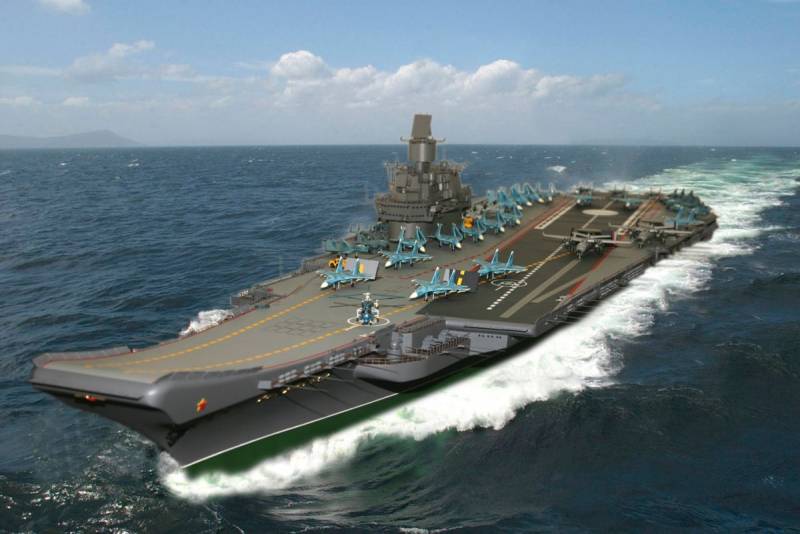
Information